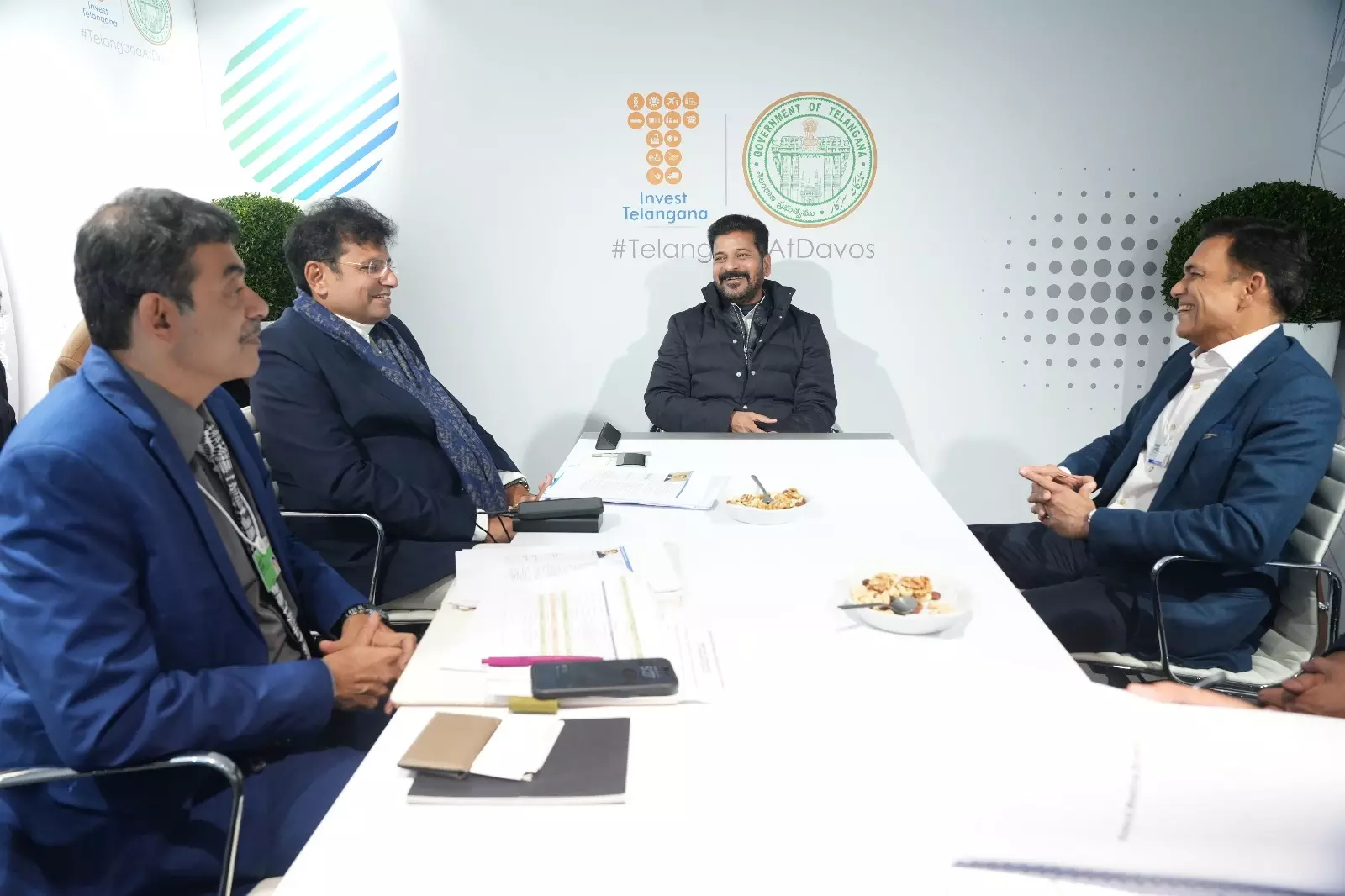DC Edit | India’s power presence at Davos deserves applause

Just like every year, the World Economic Forum at Davos this year had its share of snowfall, private jets, global-scale networking, governments seeking investments, countries and states making their pitches and showcasing their past achievements and vision for years and decades ahead, protests and demonstrations by non-profits and activists, and deals and agreements being inked.
Officially, India was present with a full range, including three massive pavilions by the Central government, one of which was fully about women’s empowerment and transformational initiatives that are underway. The other two pavilions showcased both hard power and initiatives such as Make in India, besides the story of our country’s rapidly changing infrastructure and clout, our success stories and policies.
Then there were four states — the two Congress-ruled states of Telangana and Karnataka, the DMK-led Tamil Nadu, and the Shiv Sena plus BJP-led Maharashtra — together the four of the most advanced in India in terms of economic and industrial success stories. Gujarat, having recently concluded a very successful Vibrant Gujarat global investor meet, stayed away.
All the four major states attracted top-notch business houses and leaders who were keen to invest in India and in these largely-southern states. They also concluded agreements for expansion of existing investment engagements.
The interest global side assessment must be the nearly-absent China story. There were a few mainland China investors who looked around for the odd opportunity, but in a bird’s eye view, the dragon was missing.
Understandably, the India story was both big and diverse, and vibrantly attracting serious attention and engagement. Telangana, for example, under the leadership of new chief minister A. Revanth Reddy concluded deals worth over Rs 40,000 crores, nearly double last year’s agreements.
The biggest themes at Davos were, understandably, environment and sustainability, artificial intelligence, and food systems and planetary-scale solutions for better mechanisms for address injustices and oppression, including inequality.
India could showcase its growing prowess in economic terms — both through its current status as a rapidly modernising and developing nation, with pockets of capabilities matching the best in the world, and its future plans. India could pitch opportunities, as part of its transformational vision, and its strengths and aspirations to be in the top three nations of the global economy in the coming decades successfully.
India was also able to showcase itself as capable of solving the world’s problems in healthcare, medical tourism, pharmaceuticals and contract manufacturing, software and energy. Green areas of economy and newer means to fuse AI with sustainability took centrestage.
An interesting political sideshow was the visit of Ukranian President Volodymyr Zelenskyy, whose presence suddenly turned one of the greatest examples of a “global village” in Switzerland where the world’s most powerful and rich meet to set the agenda for the entire world into an uncharacteristic fortress with sudden restrictions on movements for nearly a day.
The highlight of the show was several Indian leaders, including Union ministers Hardeep Singh Puri and Smriti Irani as well as the chief ministers of Telangana and Maharashtra, participating in the CET forums and talks which were about farmers, agriculture, impact of climate change on the most vulnerable, conservation and making healthcare accessible to all.
The most powerful words we heard were CM Revanth Reddy concluding one of his speeches with: “I urge the world leaders… farmers have never let down the world. Let the world now step up to act to help the farmers.”

